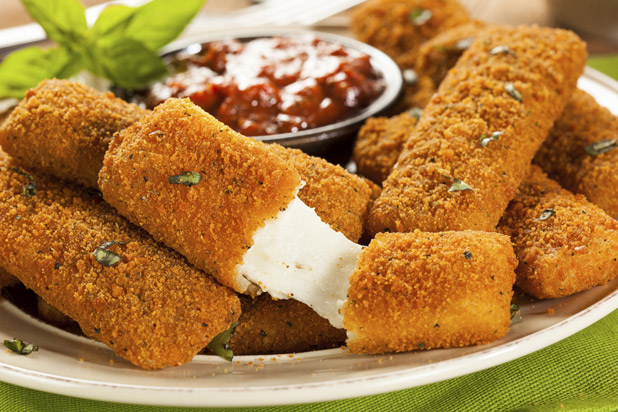13 Foods Highest In Trans Fats
In a simpler time, we were told to avoid foods that were high in fat. But then we learned that there are many different types of fats, including some, like olive oil, that are good for you. There's one variety of fat, however, that's worse for you than all the others, and it's one you should try to avoid at all costs: trans fats. To make it easier to know which foods contain this toxin, we've rounded up the 13 foods that you're most likely to find them in.
13 Foods Highest in Trans Fats (Slideshow)
So what is trans fat, exactly? Essentially, it's the type of fat that's created when hydrogen is added to the chemical structure of a fat, typically vegetable oil. The addition of hydrogen helps to make the fat (and therefore the food it's used in) more shelf-stable, preventing it from easily spoiling when left out unrefrigerated. Partial hydrogenation (the process of adding hydrogen to fat) also creates a semi-solid fat, which is necessary in order to prevent foods from melting at room temperature. Partially hydrogenated oil is also much cheaper than butter, lard, or other semi-solid fats like palm oil. Trans fats also take much longer to go rancid than traditional fats, making partially-hydrogenated oil a favorite frying oil for restaurants.
Trans fats actually occur naturally in animal fat and dairy, but at much smaller concentrations than the amount used in processed foods. Trans fats also have no nutritional value. While saturated fat (most commonly found in animal fat and cheese) and trans fats increase levels of LDL ("bad" cholesterol), trans fats actually decrease the level of HDL ("good" cholesterol) in the bloodstream, increasing the risk of heart disease. While it's impossible to completely avoid all trans fats due to their presence in nature, the National Academy of Sciences advises cutting them out of your diet as much as possible, and the best place to start is avoiding all foods with the phrase "partially hydrogenated" anywhere in the ingredients list.
So what exactly are the risks associated with eating too much trans fat? We're glad you asked! A diet high in trans fats can lead to high blood pressure, obesity, and heart disease. Studies have also indicated that increased trans fat consumption may lead to Alzheimer's disease, prostate and breast cancer, Type 2 diabetes, liver dysfunction, infertility, depression, and even aggression.
Read on to learn which 13 foods are the highest in trans fats. And even if the nutrition label says there's no trans fat, brands are allowed to round down to zero if there's less than half a gram. So check the ingredients: if there's anything there that's partially hydrogenated, that means trans fats are present and you should probably buy something else.
Deep-Fried Food

Because partially hydrogenated oil lasts longer without going rancid, many restaurants deep-fry with it. Most fast food chains have made the switch to non-hydrogenated oil, but several, like Popeye's, still haven't (an order of Popeye's hash browns contains a whopping 10 grams). As for what's in the fry-o-lator at your local bar and grill, there's really no way to know, so it's best to avoid the fried stuff altogether.
Pie crust

The light, flaky consistency is in pie crusts in many cases due to trans fats.
